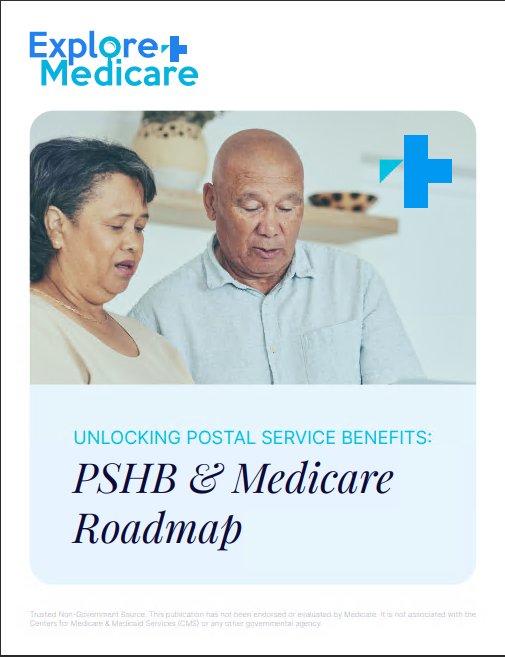Key Takeaways
-
You can switch between Medicare Advantage and Medicare Supplement plans at specific times, but the process and eligibility vary based on your circumstances.
-
Understanding enrollment periods, coverage differences, and underwriting rules can help you make a smooth transition without unexpected costs or gaps in coverage.
Making the Switch: What You Need to Know
If you’re considering switching from a Medicare Advantage plan to a Medicare Supplement (Medigap) plan or vice versa in 2025, you’re not alone. Many beneficiaries re-evaluate their coverage each year to find the best fit for their healthcare needs. However, the process isn’t as simple as signing up for a new plan—it requires careful timing and consideration of the rules that apply to each type of coverage.
Understanding the Key Differences Between Plans
Before switching, it’s important to understand the fundamental differences between Medicare Advantage and Medicare Supplement plans.
Medicare Advantage (Part C)
-
Provides an alternative to Original Medicare.
-
Often includes extra benefits like dental, vision, and hearing.
-
May have network restrictions (HMO or PPO).
-
Typically has cost-sharing such as copayments and deductibles.
Medicare Supplement (Medigap)
-
Works alongside Original Medicare (Parts A and B).
-
Helps cover out-of-pocket costs like deductibles, coinsurance, and copayments.
-
Allows you to see any provider that accepts Medicare, without network restrictions.
-
Requires separate enrollment in a Part D prescription drug plan for medication coverage.
Understanding these differences helps you determine whether switching plans aligns with your healthcare needs and budget.
When Can You Switch from Medicare Advantage to Medigap?
Switching from Medicare Advantage to a Medicare Supplement plan is not always straightforward. You can only disenroll from a Medicare Advantage plan during specific enrollment periods:
Medicare Advantage Open Enrollment Period (January 1 – March 31, 2025)
-
You can switch from a Medicare Advantage plan to Original Medicare.
-
If you switch, you can apply for a Medicare Supplement plan, but acceptance depends on underwriting unless you have guaranteed issue rights.
-
You can also enroll in a standalone Part D plan for prescription drug coverage.
Annual Enrollment Period (October 15 – December 7, 2025)
-
You can switch from Medicare Advantage to Original Medicare.
-
You may apply for a Medigap policy, but medical underwriting may apply unless you have guaranteed issue rights.
Special Enrollment Periods (Varies by Circumstance)
-
If you qualify for a Special Enrollment Period due to specific circumstances (such as moving out of your plan’s service area or losing employer coverage), you can switch plans without penalty.
-
You may be eligible for guaranteed issue rights, which means you can enroll in a Medigap plan without medical underwriting.
Medigap Underwriting: Why It Matters
One of the biggest hurdles when switching to a Medicare Supplement plan is underwriting. In most cases, unless you have a guaranteed issue right, you’ll need to go through medical underwriting, meaning insurers can review your health history and deny coverage or charge higher premiums based on pre-existing conditions.
Guaranteed Issue Rights Apply When:
-
Your Medicare Advantage plan is leaving Medicare or ending coverage in your area.
-
You are within your initial Medigap Open Enrollment Period (the first six months after enrolling in Part B).
-
You are switching from a Medicare Advantage plan back to Original Medicare within the first year of enrollment (Trial Right).
-
You are leaving employer or union coverage that supplemented Medicare.
If you do not have guaranteed issue rights, insurers may decline your application based on health conditions.
How to Switch from Medigap to Medicare Advantage
If you have a Medigap policy and want to switch to a Medicare Advantage plan, the process is usually easier. However, there are key factors to keep in mind.
When Can You Enroll in a Medicare Advantage Plan?
Annual Enrollment Period (October 15 – December 7, 2025):
-
You can switch from Medigap to a Medicare Advantage plan.
-
Your new Medicare Advantage plan starts on January 1, 2026.
Medicare Advantage Open Enrollment Period (January 1 – March 31, 2025):
-
If you’re already in a Medicare Advantage plan, you can switch to another Medicare Advantage plan.
Important Considerations Before Dropping Medigap
-
If you drop your Medigap policy, you may not be able to get it back later, especially if you have health conditions that require underwriting.
-
Medicare Advantage plans include their own cost-sharing structures, provider networks, and benefits.
-
You must continue paying your Medicare Part B premium.
-
If your Medicare Advantage plan does not include prescription drug coverage, you cannot enroll in a separate Part D plan.
Steps to Switch Plans Successfully
If You Are Switching from Medicare Advantage to Medigap:
-
Enroll in Original Medicare (Parts A and B). If you’re leaving Medicare Advantage, you must return to Original Medicare first.
-
Apply for a Medigap plan. If you have guaranteed issue rights, you cannot be denied coverage. Otherwise, be prepared for underwriting.
-
Sign up for a Part D plan. Medigap does not cover prescription drugs, so you’ll need a separate Part D plan if you want drug coverage.
-
Cancel your Medicare Advantage plan. Make sure you confirm the effective dates so there are no gaps in coverage.
If You Are Switching from Medigap to Medicare Advantage:
-
Review Medicare Advantage plans available in your area. Check provider networks, coverage, and benefits.
-
Enroll in a Medicare Advantage plan during an eligible period. Your new plan will start on January 1 if you enroll during the Annual Enrollment Period.
-
Cancel your Medigap policy. Once your Medicare Advantage plan is active, you no longer need Medigap coverage.
-
Confirm prescription drug coverage. Make sure your new plan includes the medications you need, as you cannot have both Medigap and Part D coverage.
Making the Right Choice for Your Healthcare Needs
Switching between Medicare Advantage and Medicare Supplement plans requires planning and careful timing. Consider your healthcare needs, provider preferences, and financial situation before making a decision. Since Medigap plans have stricter enrollment rules, be sure you understand the underwriting process and any guaranteed issue rights that may apply to you. Likewise, when switching to Medicare Advantage, ensure the plan’s network and benefits align with your needs.
If you’re unsure about your options, speaking with a licensed Medicare representative can help you navigate the enrollment process with confidence.




